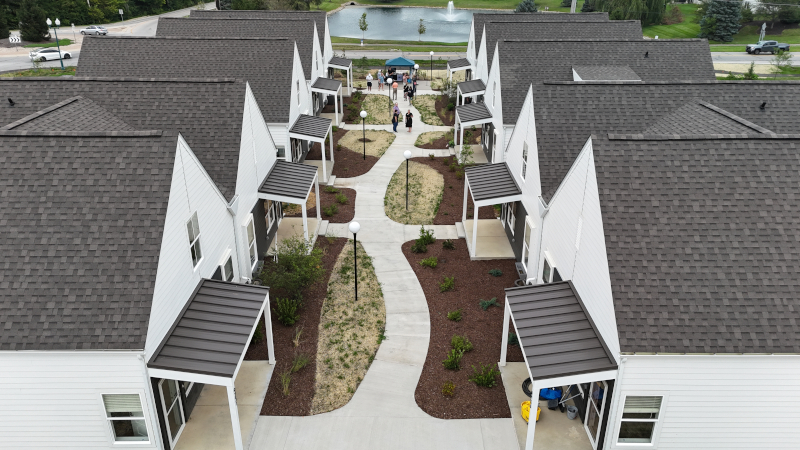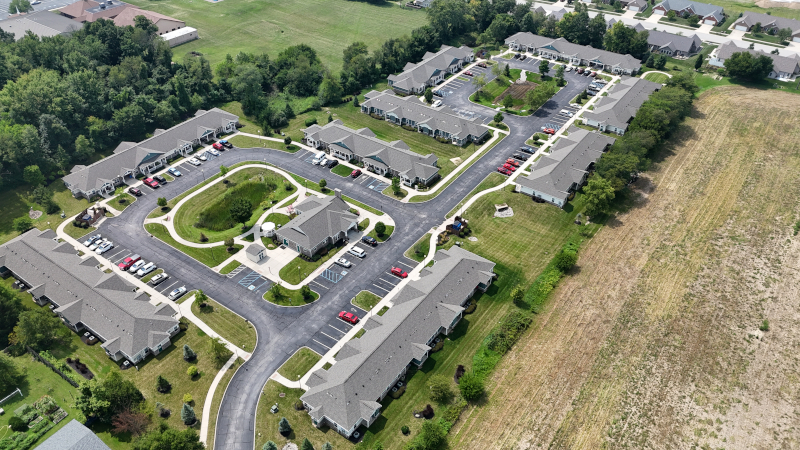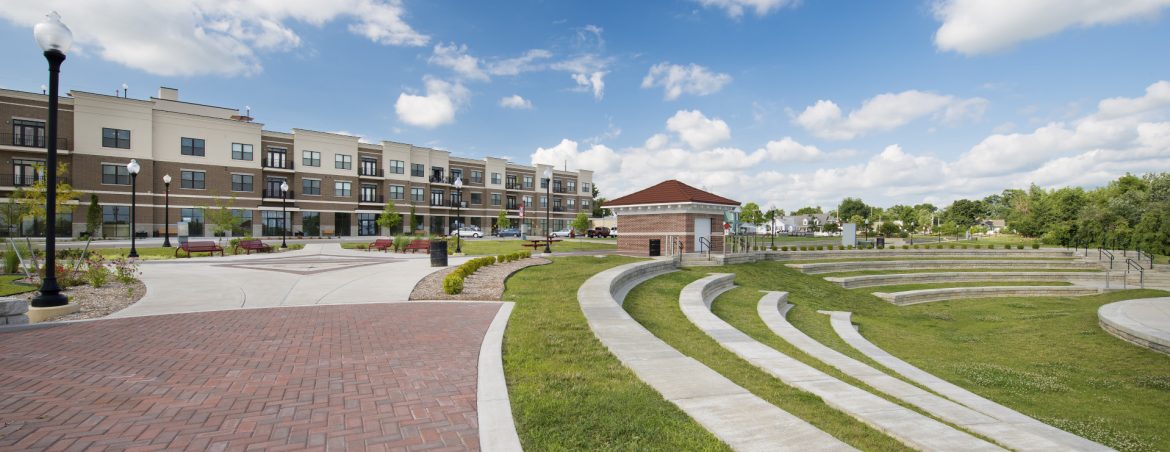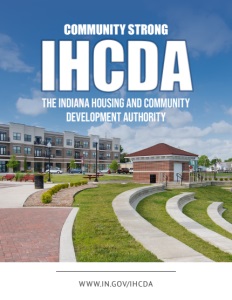The Indiana Housing and Community Development Authority (IHCDA)
Community Strong
Indiana’s Path to Affordable, Sustainable Housing
Indiana faces a critical moment in its efforts to address affordable housing as the gap between housing availability and economic growth widens. Jacob Sipe, Executive Director of the Indiana Housing and Community Development Authority (IHCDA), leads this effort and is focused on tackling these challenges with a clear vision. Sipe’s approach centers on fostering partnerships, driving innovation, and using data to shape solutions for the state’s housing needs.
While the housing supply has struggled to keep pace with job growth and rising construction costs have added pressure, there is hope for progress. Through collaborative efforts, innovative programs, and a deep understanding of Indiana’s communities, the state positions itself as a leader in affordable housing and community development.
Tackling housing affordability
The Indiana Housing and Community Development Authority (IHCDA) is the state’s housing finance agency, but its scope extends far beyond financing. “We are the housing finance agency for Indiana,” Sipe explains. “Every state has a housing finance agency, but what sets us apart is the diversity of our programs and how we approach housing challenges.”
At the heart of IHCDA’s efforts are three major programs. First, the single-family mortgage product provides down payment assistance for first-time homebuyers, helping to make homeownership more accessible. Second, the Low-Income Housing Tax Credit (LIHTC) program, Section 42, is the state’s most powerful tool for creating affordable rental housing. “It’s a critical program for us,” Sipe says. “It allows us to create affordable housing at a scale that would not be possible without it.” Lastly, IHCDA manages the bond program for multifamily housing, which helps finance larger-scale developments across the state.
In addition to these core programs, IHCDA runs several anti-poverty initiatives in collaboration with community action agencies. These programs aim to address homelessness and provide housing stability for vulnerable populations. “We’re working hard to prevent and end homelessness in Indiana,” Sipe notes. “Our agency is diverse, and we’re involved in everything from financing new developments to working with community organizations on poverty reduction.”

Rising construction costs
Despite its many programs, IHCDA faces significant challenges. Sipe explains that one of the biggest hurdles is the rising construction cost. “Construction costs have escalated significantly, making it harder for us to create and preserve affordable housing,” he says. “It’s a challenge not just for us as a state but for our builders and developers, too.”
The increasing cost of building materials, labor, and other expenses has made it more challenging to develop new housing units, particularly in high demand. Rising interest rates have compounded this, making borrowing more expensive for developers and homebuyers. “Higher interest rates are putting additional pressure on homebuyers and renters,” Sipe says. We’re seeing rents increase rapidly, and there’s limited inventory of existing homes for sale.”
Like many other states, Indiana is struggling to keep up with the demand for housing, especially as its economy continues to grow. “We’re producing more jobs than we are housing,” Sipe points out. “That’s causing some real challenges for us.”
Sipe acknowledges that these challenges are not unique to Indiana but are part of a broader national trend. However, he believes Indiana is in a better position than many other states due to its affordability. “Even with these pressures, Indiana remains one of the more affordable states to live in,” Sipe says. “That’s something we should be proud of.”
Real-time housing data
To address these challenges, Sipe and his team have developed several forward-thinking solutions to make housing more accessible and affordable. Among the standout initiatives is the Indiana Housing Dashboard, a cutting-edge data platform providing real-time insights into statewide housing trends.
“We collaborated with a wide range of housing stakeholders—realtors, mortgage bankers, developers, and advocates—to create a comprehensive resource for housing data,” Sipe explains. “The goal is to equip communities with the knowledge they need to shape effective housing strategies.”
The dashboard offers users access to various data, such as housing needs assessments, job statistics, income levels, and demographic trends. “You can generate a housing needs assessment for your county, city, or even a specific census tract in seconds,” Sipe notes. “It’s an invaluable resource for local governments, developers, and community organizations.”
The dashboard provides up-to-the-minute data, enabling communities to craft targeted housing strategies tailored to their specific needs. “Our aim is to give local leaders the tools they need to attract developers and build the right housing for their communities,” says Sipe. “It’s not just about adding more housing—it’s about creating the right fit for each area.”
The success of the Indiana Housing Dashboard has gained national attention, with several states now replicating the model. “I believe about 13 other states have adopted similar platforms,” Sipe adds. “It’s exciting to see this innovation spreading nationwide.”
Leveraging resources for greater impact
One key reason IHCDA has successfully addressed housing challenges is its ability to forge strategic partnerships with various stakeholders. “We can’t do this work alone,” Sipe says. “It takes collaboration with private sector partners, nonprofit organizations, and other government agencies to make a real impact.”
IHCDA’s partnership with Habitat for Humanity is a prime example of this collaboration. “Coming out of the pandemic, Habitat needed more capital to support their operations,” Sipe explains. “We partnered with Old National Bank to purchase Habitat’s mortgages and provided a loan guarantee to make it happen. That partnership infused millions of dollars into Habitat, allowing them to continue their work building affordable homes.”
Another innovative partnership is IHCDA’s XBE Developer Initiative, which supports minority, women, and veteran-owned developers. “We’ve helped two first-time tax credit developers get started—one in Indianapolis and one in South Bend,” Sipe says. “It’s a program that’s been recognized nationally as a model for supporting new developers, particularly those from underrepresented groups.”
These partnerships extend beyond housing development. IHCDA is also working with local governments and community organizations to improve the quality of life in Indiana’s neighborhoods. “We’re not just focused on housing—we’re focused on community development,” Sipe says. “That’s why we’re involved in placemaking initiatives like Creating Places.”

Crowdfunding for community transformation
The Creating Places program is one of IHCDA’s most exciting initiatives. It uses crowdfunding to support small-scale community development projects, such as public art installations, parks, and playgrounds. “It’s a unique program from a state perspective,” Sipe explains. “We partner with nonprofit organizations, and if they meet their crowdfunding goal, we match it.”
Since its launch, the program has supported over 250 projects across Indiana, with grants ranging from $5,000 to $50,000. “We’ve done everything from murals to playgrounds,” Sipe says. “The variety of projects is incredible, and the impact on communities is huge.”
One of the most inspiring aspects of Creating Places is its ability to engage young people in community development. The My Community, My Vision program, a spin-off of Creating Places, empowers high school students to develop and implement placemaking projects in their hometowns. “We want young people to take ownership of their communities,” Sipe explains. “One group of students raised $60,000 to open a coffee shop in their small town. Now, they’re running the shop themselves.”
Sipe is passionate about the power of placemaking to transform communities. “It’s not just about building houses—it’s about creating places where people want to live,” he says. “We’re seeing the impact of these small projects in communities of all sizes, from our smallest towns to our largest cities.”
Building stronger communities
As IHCDA looks ahead, Sipe is focused on keeping the agency at the forefront of innovation while adapting to evolving needs. A key milestone is developing a new strategic plan in 2025, coinciding with a new gubernatorial administration. “We’ll collaborate with our community partners to set priorities for the next four years,” Sipe notes. “Rental affordability, homeownership, and housing self-sufficiency will remain top priorities.”
Sipe is also enthusiastic about the state’s investment in workforce housing, including the Affordable Workforce Housing Credit and a $70 million revolving loan fund to support housing infrastructure. “Demand for these programs is strong,” he says, noting that 11 developments have already been awarded, with some beginning construction.
Sipe envisions a continued focus on entry-level housing, workforce housing, and affordable rental units. “We need to invest strategically in housing,” he explains. “There are gaps across all levels, from low-income to middle-income workforce housing, and we’re committed to filling those gaps to ensure everyone in Indiana has access to safe, affordable housing.”
Sipe’s vision for Indiana’s housing future is clear: it’s not just about building more homes but creating communities where people can thrive. By leveraging data, building strategic partnerships, and empowering local communities, IHCDA is ensuring Indiana remains a leader in affordable housing and community development for years.
AT A GLANCE
The Indiana Housing and Community Development Authority (IHCDA)
What: A state agency responsible for promoting affordable housing and community development throughout Indiana.
Where: Indiana
Website: https://www.in.gov/ihcda/


